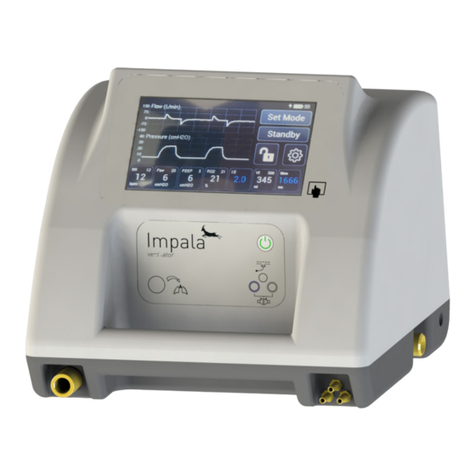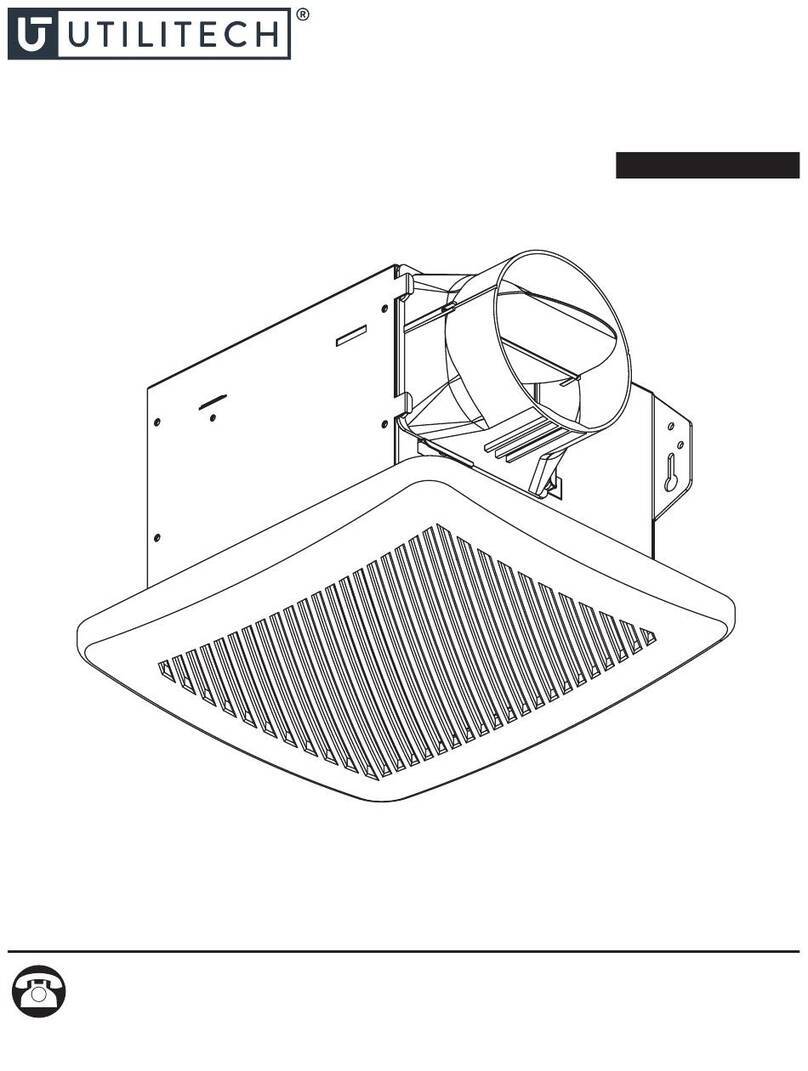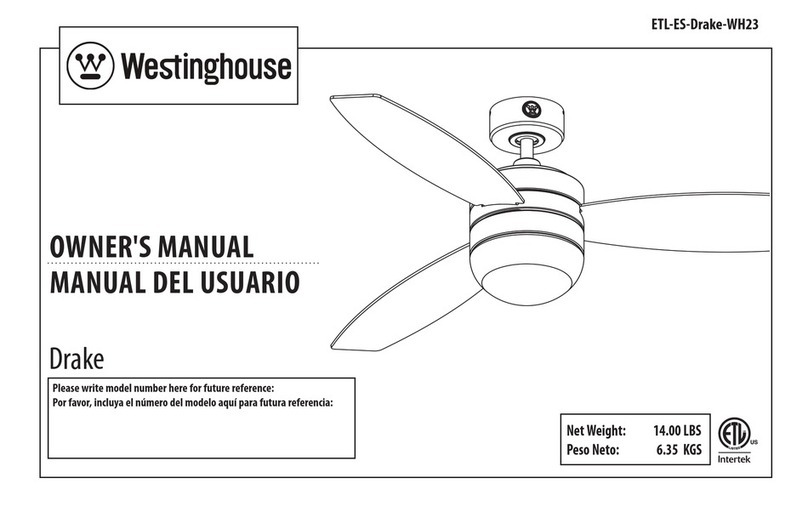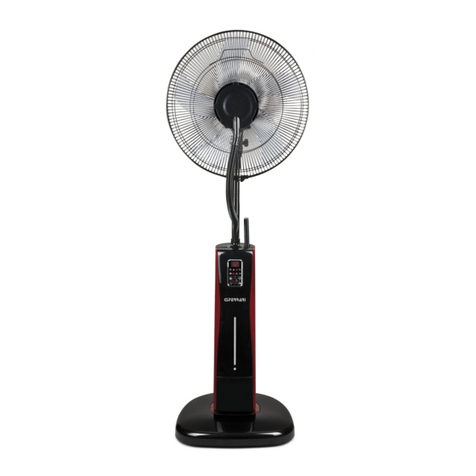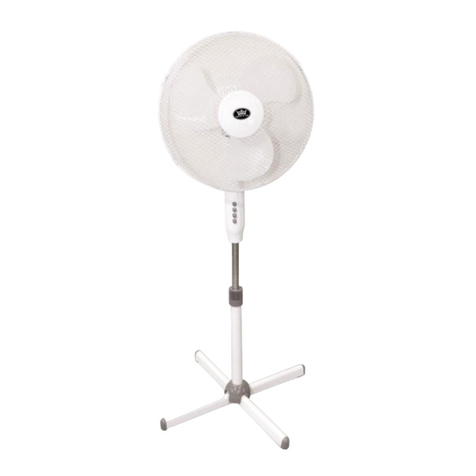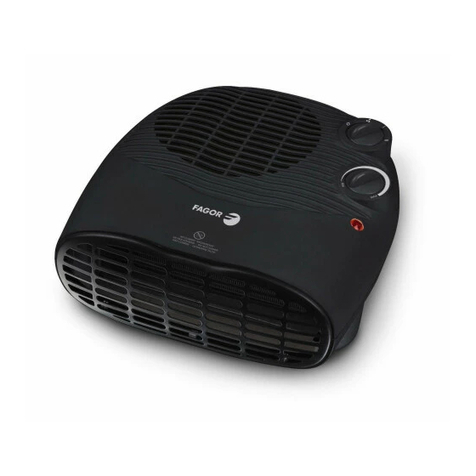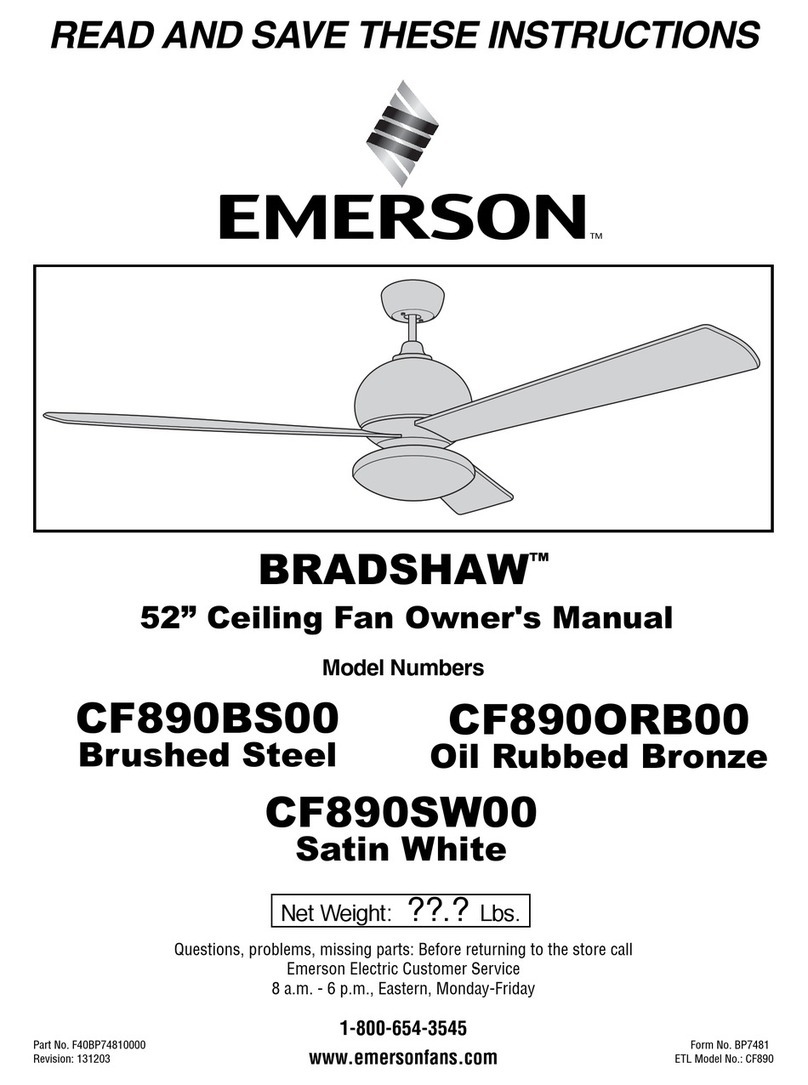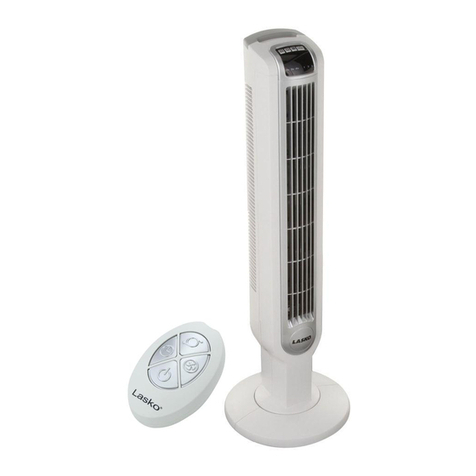WIEMANN MEDUMAT Easy WM 28000 User manual

MEDUMAT
Easy
Ventilator
WM
28000
Servicing and repair instructions

2
Contents
Introduction
. . . . . . . . . . . . . . . . . . . . . . . . . .
3
1.
Overview
. . . . . . . . . . . . . . . . . . . . . . . . . . .
4
1.1
Special symbols on the ventilator
. . . . . .
5
2.
Description
. . . . . . . . . . . . . . . . . . . . . . . . . .
6
2.1
Uses
. . . . . . . . . . . . . . . . . . . . . . . . .
6
2.2
Ventilation function
. . . . . . . . . . . . . . .
6
2.3
Demandflow function
. . . . . . . . . . . . . .
7
2.4
Patient valve
. . . . . . . . . . . . . . . . . . .
7
2.5
Audio response
. . . . . . . . . . . . . . . . .
7
3.
Final check
. . . . . . . . . . . . . . . . . . . . . . . . . .
8
3.1
Testing equipment required
. . . . . . . . . .
8
3.2
Preparing for final check
. . . . . . . . . . .
8
3.3
Entering the device data
. . . . . . . . . . .
8
3.4
Testing for leaks and pressure reading
. .
9
3.5
Self-test when device is switched on
. . . .
9
3.6
Functional check on controls
(button check)
. . . . . . . . . . . . . . . . . . .
9
3.7
Functional test and alarms
. . . . . . . . .
10
3.8
Battery power
. . . . . . . . . . . . . . . . .
10
3.9
Test pressure sensors
. . . . . . . . . . . . .
11
3.10
Functional check on frequency setting
. .
12
3.11
Functional check
breath volume
at
4.5
bar input pressure and
10
mbar back pressure
. . . . . . . . . . .
12
3.12
Checking O
2
concentration
. . . . . . . .
13
3.13
Functional check on pressure limit
. . . .
13
3.14
Functional check on relief valve
without
patient valve
. . . . . . . . . . . . .
13
3.15
Checking the type plate data
. . . . . . .
13
3.16
Check on external condition
. . . . . . . .
14
3.17
Documentation
. . . . . . . . . . . . . . . . .
14
4.
Servicing
. . . . . . . . . . . . . . . . . . . . . . . . . . .
15
4.1
Intervals and scope
. . . . . . . . . . . . . .
15
4.2
Batteries
. . . . . . . . . . . . . . . . . . . . .
16
4.3
Storage
. . . . . . . . . . . . . . . . . . . . .
16
5.
Troubleshooting
. . . . . . . . . . . . . . . . . . . . . .
17
6.
Repair information and instructions
. . . . . . .
20
6.1
General
. . . . . . . . . . . . . . . . . . . . .
20
6.2
Changing the filter in the pressurised
gas
connection
. . . . . . . . . . . . . . . .
20
6.3
Opening the device
. . . . . . . . . . . . .
21
6.4
Closing the device
. . . . . . . . . . . . . .
22
6.5
Replacing button cell
. . . . . . . . . . . . .
24
6.6
Changing the speaker
. . . . . . . . . . . .
25
6.7
Changing the board
. . . . . . . . . . . .
26
6.8
Replacing the pneumatic block
. . . . . .
27
6.9
Replacing the 3/2-way magnetic valve
29
6.10
Calibrating the potentiometer
(after changing pneumatic block
including
potentiometer)
. . . . . . . . . . .
30
6.11
Changing upper part of housing
. . . . .
31
6.12
Changing the fascia film
. . . . . . . . . .
32
6.13
Changing lower part of housing
. . . . .
33
7.
Spare parts
. . . . . . . . . . . . . . . . . . . . . . . . .
35
7.1
Spare parts list
. . . . . . . . . . . . . . . . .
35
7.2
Service sets
. . . . . . . . . . . . . . . . . . .
37
8.
Tools and Test Equipment
. . . . . . . . . . . . . . .
38
8.1
General tools
. . . . . . . . . . . . . . . . . .
38
8.2
Special tools
. . . . . . . . . . . . . . . . . .
38
8.3 Testing equipment. . . . . . . . . . . . . . . 39
9. Technical data . . . . . . . . . . . . . . . . . . . . . . . 40
9.1 Pneumatic / electronic systems . . . . . . 41
10. Technical Changes . . . . . . . . . . . . . . . . . . . 42
11. Repair and service records . . . . . . . . . . . . . . 43
© Copyright WEINMANN GmbH & Co. KG.
The content and presentation are copyright protected and may only be used by authorised WEINMANN Service Partners in
the course of their service operations. The content must not be reproduced or passed on to third parties. The complete documents
must be returned on termination of the cooperation with WEINMANN.

Introduction 3
Introduction
For decades WEINMANN has been developing,
manufacturing and marketing devices for emergen-
cy medical care, oxygen therapy and inhalation
therapy.
In 1972 WEINMANN put the first MEDUMAT
emergency respirator on the market.
MEDUMAT emergency respirators are automatic
respirators. They are used for controlled respiration
in emergency medical care, e.g. in cases of acute
respiratory disorders, and also secondary obstruc-
tions.
The new generation of devices, developed specif-
ically to meet users’ requirements and put on the
market in 1997, offers users and patients in-
creased security. An intelligent alarm system moni-
tors the patient’s breathing and informs the user
about any problems that occur. These devices thus
offer even greater security and reliability during
respiration.
The aim of these servicing and repair instructions is
to familiarise you, as an expert in the field, with the
function, technology, servicing and repair of the
MEDUMAT respirator. Thanks to training which you
have already received from WEINMANN, you now
count as “trained expert personnel” and can there-
fore give your customers appropriate instructions,
remedy problems on your own and perform the
functional checks prescribed in the operating instruc-
tions and any repairs required in accordance with
these Service and Repair Instructions.
In the event of a warranty claim, send the MEDUMAT
to WEINMANN.
To enable us to process ex gratia requests or war-
ranty claims, please enclose the customer’s proof
of purchase (invoice) with the device.
Repairs or servicing work may be performed only
by WEINMANN or by trained specialist staff.
You are responsible for repairs carried out yourself
and for their warranty!
Use only original WEINMANN spares for repairs.
Please bear in mind:
Your customer trusts you and relies on your expert
capability, just as you rely on WEINMANN.
Note:
For the following information, please consult the Operating Instructions for MEDUMAT:
•Safety Information
•Fitting accessories
• Operating MEDUMAT emergency respirators
• Hygienic preparation
• Functional check

4Overview
1. Overview
Control panel MEDUMAT Easy
Connections MEDUMAT Easy
Stenosis
Disconnection
< 2,7 bar O
2
16
15
13
14
14
12
12
11
10
10
9
11
16
7
530
3
MV (l/min)
Freq.(min
-1
)
Demand-
flow
60
mbar
50
40
30
20
10
0
MEDUMAT
Easy
2Respiratory pressure
indicator (bar graph)
5Colour code
8LED Demandflow
4Alarm confirmation
3Alarm panel
9ON/OFF switch
7Index position
6Adjuster knob, ventilation parameters
1Mask/tube ventilation
switch with indicator
LEDs
Stenosis
Disconnection
<2,7bar O
2
16
15
13
14
14
12
12
11
10
10
9
11
16
7
530
3
MV(l/min)
Freq.(min
-1
)
Demand-
flow
60
mbar
50
40
30
20
10
0
MEDUMAT
Easy
Stenosis
Disconnection
<2,7 barO
2
16
15
13
14
14
12
12
11
10
10
9
11
16
7
530
3
MV(l/min)
Freq.(min
-1
)
Demand-
flow
60
mbar
50
40
30
20
10
0
MEDUMAT
Easy
11 Battery compartment
10 Pressurized gas
connection
14 Ventilation hose connection
15 Relief outlet valve
12 Speaker
13 Pressure gauge hose
connection

Overview 5
1.1 Special symbols on the ventilator
Symbols on MEDUMAT Easy
Inlet 2,7 - 6 bar O2.
MEDUMAT Easy device information plate
SN Serial number of device
Year of manufacture
Do not dispose of device in domestic waste.
Safety check and servicing label
Servicing label: indicates when the next service is due.
Safety check label: (in Germany only) marks when the next safety check as per §6 of the German
law relating to users of medical devices is required.
Typ :
Pressionhaute
Pressionbasse
<2,7 barO
2
16
15
13
14
14
12
12
11
10
10
9
11
16
7
530
3
60
mbar
50
40
30
20
10
0
MEDUMAT
Easy
Typ:
Stenosis
Disconnection
<2,7barO
2
16
15
13
14
14
12
12
11
10
10
9
11
16
7
530
3
MV(l/min)
Freq.(min
-1
)
Demand-
flow
60
mbar
50
40
30
20
10
0
MEDUMAT
Easy

6Description
2. Description
2.1 Uses
MEDUMAT Easy is an automatic oxygen respiration device (short-term ventilator) with additional inhalation
facility.
You can use MEDUMAT Easy:
•to revive patients at the site of the emergency;
• for longer periods in more protracted
emergencies, e.g. fires;
•for short-term O2inhalation using a respiration
mask.
You can use MEDUMAT Easy while transporting
patients:
• between the various rooms and departments
of a hospital;
• between the hospital and other premises;
• in emergencies;
•when transport over considerable distances is
planned.
MEDUMAT Easy:
•is designed to provide controlled ventilation to
persons of 10 kg body weight or more;
• is used to treat respiratory arrest;
•can be preset to parameters that ensure evenly
balanced ventilation, provided that the
selected maximum ventilation pressure Pmax is
not exceeded;
•permits breathing-controlled oxygen inhalation
in Demand mode.
2.2 Ventilation function
MEDUMAT Easy operates within a pressure range
of 2.7 to 6 bar and at a flow rate of not less than
70 l/min O2. It has a built-in power supply.
It uses high-pressure, medicinal-grade oxygen. An
external pressure reducer brings this down to the
required operating pressure. The oxygen supply is
fed in at input valve 10.
The ventilation settings are continuously variable.
These settings (frequency and volume per minute
are coupled) and the inspiration/expiration ratio
of 1:1.67 are regulated by internal electronic
control mechanisms.
The gas for inspiration flows along the hose and
through the patient valve and either the mask or
tube into the patient’s airways. The patient valve is
fitted with a lip membrane that enables expired
gas to be conducted away through the expiration
tube.
Stenosis
Disconnection
< 2,7 bar O
2
16
15
13
14
14
12
12
11
10
10
9
11
16
7
530
3
MV (l/min)
Freq.(min
-1
)
Demand-
flow
60
mbar
50
40
30
20
10
0
MEDUMAT
Easy
10

Description 7
You can check the course of ventilation on the
respiration pressure indicator 2.
2.3 Demandflow function
The Demandflow setting switches the
MEDUMAT Easy to breathing-controlled O2
inhalation. Such inhalation must be carried out
with the respiration mask. A small inspiration
(trigger) pulse causes oxygen to continue flowing
until slight overpressure interrupts the flow.
Expiration then takes place via the patient valve as
in ventilation.
2.4 Patient valve
The gas for inspiration is channelled into the
patient’s airways through the patient valve.
The valve is designed to enable spontaneous
breathing in the event of failure of the
MEDUMAT Easy.
2.5 Audio response
The device has an audio response facility that can
be switched on for user guidance, especially for
users who have little practice.
If audio guidance is not wanted, it can be
switched off by pressing a combination of keys
(see “4.10 Audio response for user guidance” in
the operating instructions).
2
9
60
mbar
50
40
30
20
10
0
16
15
13
14
14
12
12
11
10
10
9
11
16
7
530
3
MV (l/min)
Freq.(min-1)
Demand-
flow
10
0
Demandflow setting
40 34 35 36 41
39
37
38

8Final check
3. Final check
After every repair and every service, the device
must be subjected to the following final check in
accordance with Test Instructions WM 28001
and the test record.
Note:
For the final check on the MEDUMAT Easy you
must connect the ventilation hose and the patient
valve to the device.
MEDUMAT Easy must not be used if the final
check reveals defects or deviations from the
specified parameters.
We recommend that you always hold reserve
stocks of the following items:
• replacement washers for the connections;
• lip membrane for the patient valve.
• membrane for spontaneous breathing tube;
• membrane for exhalation tube;
• O-ring 1145/118.
3.1 Testing equipment required
•Volume flow meter, Type RT 200 (Timeter), Type EKU VIP – ventilator, PF 300 Imtmedical or comparable
test device
• Adjustable orifice, e.g. ball valve, internal diameter ≥10 mm
• Test set for functional checks WM 15323
• Oxygen concentration meter, 0 – 100% ± 1%,
e.g. Type Oxycontrol WM 13550
• Set, hose with syringe WM 15359
• Pressure gauge 0 - 6.3 bar, class 1.6
• Pressure gauge 0 -100 mbar, class 1.6
• Set, supply test Medumat / Modules WM 15440
3.2 Preparing for final check
1. Connect MEDUMAT Easy to the 4.5 - 6 bar pressure supply.
2. Connect ventilation hose and pressure measurement tube to MEDUMAT Easy.
3. Device setting: Freq. = 30 min-1, MV = 3 l/min.
4. Language setting “English”.
3.3 Entering the device data
• Enter the device number and the tester number in the test record.

Final check 9
3.4 Testing for leaks and pressure reading
3.4.1 Checking input side for leaks
• With the device switched off, apply 6 bar pressure to input side and and shut off output pressure.
Requirement: The pressure drop must be less than 0.2 bar/min.
3.4.2 Checking pressure measurement zone for leaks
• Apply 55 mbar ± 2 mbar to MEDUMAT
pressure measurement zone.
Requirement: The pressure drop must be
≤2 mbar/min.
3.5 Self-test when device is switched on
If audio response is enabled, you will hear the sentence “Open oxygen cylinder” before the self-test starts.
1. Apply 4.5 bar to the input.
2. Switch on MEDUMAT Easy at button 9.
Requirement: The self-test starts, the ventilation mode LEDs light up once each one after the other, the alarm
LEDs flash, the pressure indicator LEDs are run through 3 times, a signal tone sounds and an audio
response sentence is spoken.
3.6 Functional check on controls (button check)
1. Open the pressure supply.
2. Switch on the device.
3. Switch from mask ventilation to tube ventilation.
4. Press the alarm acknowledgement button.
Stenosis
Disconnection
< 2,7 bar O
2
16
15
13
14
14
12
12
11
10
10
9
11
16
7
530
3
60
mbar
50
40
30
20
10
0
MEDUMAT
Easy
13
Test pressure
Respiration
Syringe
pressure indicator
gauge

10 Final check
3.7 Functional test and alarms
3.7.1 Test Stenosis alarm
• Switch to tube ventilation ( ) and close patient valve outlet.
• Operate device at Freq. setting = 30 min-1 and MV = 3 l/min.
Requirement: The Stenosis alarm must be triggered after two ventilation cycles. If audio response is
enabled, the ventilator announces “Check airways and minute volume”.
3.7.2 Checking alarm confirmation
• Immediately after the first alarm tone sounds, press Alarm confirmation button 4.
Requirement: The alarm tone must be suppressed immediately.
3.7.3 Test Disconnection alarm
• Open patient valve outlet.
Requirement: The Disconnection alarm must be triggered after two ventilation cycles. If audio response
is enabled, the ventilator announces “Check ventilation system and settings”.
3.7.4 Test Pressure alarm
• Shut off pressurised gas connection of MEDUMAT (2.7 - 6.0 bar).
Requirement: The Pressure alarm must be triggered. If audio response is enabled, the ventilator
announces “Check pressure hose system and gas supply”.
3.7.5 Checking Demand mode LED
• Open the pressure supply.
Requirement: Demand mode LED must come on (flickering).
3.7.6 Check voice output
3.8 Battery power
3.8.1 3.0 V battery (on board)
Since the 3.0 V lithium cell is difficult to access, its
charge status can be checked both via the
interface and in a relevant menu.
To do so, hold down the alarm confirmation button
while switching the device on. The device is then
in battery check mode for 3 seconds, before
switching to normal operating mode.
During this 3-second period the “Power supply”
alarm in the alarm panel lights up and the voltage
measured for the lithium cell is shown on the
pressure bar graph.
The adjacent table shows how the voltage
readings correspond to the bar graph values.
Bar graph value (mbar) Battery voltage (V)
60 3.21
55 3.19
50 3.17
45 3.15
40 3.13
35 3.11
30 3.09
25 3.07
20 3.05
15 3.03
10 3.01
5 2.99
0 2.97

Final check 11
Requirement: Voltage measured for 3.0 V battery is in the range 3.0 to 3.2 V; the alarm for this cell is
triggered at 2.7 V.
3.8.2 3.6 V battery (battery compartment)
Remove the 3.6 V battery from the battery compartment and measure the voltage with a digital multimeter.
Requirement: Voltage measured for 3.6 V battery is in the range 3.4 to 3.7 V.
3.9 Test pressure sensors
3.9.1 Input pressure sensor
• Shut off pressurised gas connection of MEDUMAT (2.7 - 6.0 bar).
Requirement: The Pressure alarm must be triggered. If audio response is enabled, the ventilator
announces “Check pressure hose system and gas supply”.
3.9.2 Ventilation pressure sensor
• Connect ventilation hose to test bag.
• Run device with settings: Freq. = 10 min-1 and MV = 11 l/min.
• Switch device to mask ventilation.
Requirement: The pressure limit must respond at 20 ± 5 mbar.
• Switch device to tube ventilation.
Requirement: The pressure limit must respond at 45 ± 5 mbar.
3.9.3 Demand flow sensor
1. Supply device with pressure.
2. Switch on MEDUMAT Easy at button 9.
3. Connect ventilation tube and patient valve to test bag.
4. Set MEDUMAT Easy to demand flow mode.
5. Green LED in demand mode button illuminates.
6. Squeeze the test bag.
Requirement: Releasing the test bag triggers a short ventilation.

12 Final check
3.10 Functional check on frequency setting
• Connect ventilation hose to 10 mbar orifice and to volume flow meter.
• Run device with settings: Freq. = 14 min-1 and MV = 16 l/min.
Requirement: The frequency must be 14 ± 2 min-1.
• Run device with settings: Freq. = 10 min-1 and MV = 11 l/min.
Requirement: The frequency must be 10 ± 2 min-1.
• Run device with settings: Freq. = 30 min-1 and MV = 3 l/min.
Requirement: The frequency must be 30 ± 2 min-1.
3.11 Functional check breath volume at 4.5 bar input pressure and
10 mbar back pressure
• Run device with settings: Freq. = 14 min-1 and MV = 16 l/min.
Requirement: Breath volume must be 1140 ± 170 ml.
• Run device with settings: Freq. = 10 min-1 and MV = 11 l/min.
Requirement: Breath volume must be 1100 ± 170 ml.
• Run device with settings: Freq. = 30 min-1 and MV = 3 l/min.
Requirement: Breath volume must be 100 ± 20 ml.
Stenosis
Disconnection
<2,7 bar O
2
16
15
13
14
14
12
12
11
10
10
9
11
16
7
530
3
60
mbar
50
40
30
20
10
0
MEDUMAT
Easy
Orifice 10 mbar
Volume flow meter
Patient valve with
hose system
open
Stenosis
Disconnection
<2,7barO
2
16
15
13
14
14
12
12
11
10
10
9
11
16
7
530
3
60
mbar
50
40
30
20
10
0
MEDUMAT
Easy
Orifice at 10 mbar
Volume flow meter
Patient valve with
hose system
setting

Final check 13
3.12 Checking O2concentration
• Run device with settings: Freq. = 10 min-1, MV = 11 l/min and 100% O2.
Requirement: The O2concentration must be > 98%.
3.13 Functional check on pressure limit
• Connect ventilation hose to test bag.
• Run device with settings: Freq. = 10 min-1 and MV = 11 l/min.
• Switch device to mask ventilation.
Requirement: The pressure limit must respond at 20 ± 5 mbar.
• Switch device to tube ventilation.
Requirement: The pressure limit must respond at 45 ± 5 mbar.
3.14 Functional check on relief valve without patient valve
• Run device with settings: Freq. = 11min-1 and MV = 7 l/min.
• Switch ventilation hose to test bag.
Requirement: The test bag is fully inflated during the inspiration stroke. The ventilator is then heard to
release pressure.
3.15 Checking the type plate data
• Check type plate data against drawing.
Requirement: The type plate data must be correctly entered in accordance with the drawing.

14 Final check
3.16 Check on external condition
• Check external condition.
Requirements: The outside of the device is not scratched and there are no flaws.
The connection thread is undamaged and screws easily.
The adjuster knob is secured by self-locking against inadvertent changes.
Elbow outlet turns easily.
3.17 Documentation
• Document items 3.3 to 3.16, and also test date and tester number, in the test record.

Servicing 15
4. Servicing
Note:
Remember to perform a final check after every repair.
We recommend that maintenance work such as inspections and repairs be performed only by the
manufacturer, i.e WEINMANN, or by qualified technicians expressly authorized by WEINMANN.
4.1 Intervals and scope
Every 2 years:
Every 2 years the device (incl. patient valve and hose system) must undergo servicing and be subjected to a
safety check as specified below.
You can also have servicing and the safety check performed by WEINMANN.
Be sure to check the following items:
• Check equipment for completeness;
• Visual check:
– Mechanical damage
– Labelling of controls
– Damage to all external hoses;
•Renew parts subject to wear / parts requiring
compulsory replacement (see “7.2 Service
sets” on page 37);
•Check system components: carrying platforms,
oxygen fittings, secretion suction system, hose
connections etc.;
• Check test bag;
• Final check in accordance with Test Instructions/
Test Record STK WM 28001 (see “3. Final check”
on page 8 and see “11. Repair and service
records” on page 43).
Every 4 years:
•Servicing of the fittings in the oxygen supply system (e.g. pressure reducer) either by the manufacturer or
by a specialist expressly authorized by the manufacturer.
Every 10 years:
• Repeat testing of conventional steel or aluminium oxygen cylinders by the responsible testing
organisation. The repeat testing date is stamped on the shoulder of the cylinder.

16 Servicing
4.2 Batteries
MEDUMAT Easy is equipped with two batteries.
The main battery 18 must always be changed. The
button cell 17 (CR2430) only has to be replaced
every 4 years.
The button cell 17 supplies auxiliary power to the
electronic system if the main battery 18 fails. This
makes it possible to set off an alarm even if the
main battery suddenly fails. The device then
switches to exhalation.
In principle, the battery capacity is designed so
that under normal conditions of use, it will not need
changing in the 2 years between services. The
main battery 18 is to be renewed during the 2-
yearly service, the button cell 17 only every 4
years.
When changing batteries, special precautions
must be taken to protect the electronic circuits (see
“6.5 Replacing button cell” on page 24).
When changing the main battery 18, you must
change the O-ring 42 on the battery compartment
cover as well.
4.3 Storage
If you do not intend to use MEDUMAT Easy for a long period, we recommend the following storage
precautions:
1. Clean and disinfect the device (see “5.
Hygienic Preparation” in the operating
instructions).
2. Store MEDUMAT Easy in a dry place.
Important
Remember that devices still require servicing at the
specified intervals even when in storage, otherwise
they are not allowed to be used when removed
from storage.
Stenosis
Disconnection
<2,7 bar O
2
16
15
13
14
14
12
12
11
10
10
9
11
16
7
530
3
MV(l/min)
Freq.(min
-1
)
Demand-
flow
60
mbar
50
40
30
20
10
0
MEDUMAT
Easy
17: Button cell for back-up power
18: Lithium battery 3.6 V for main power
supply MEDUMAT Easy
17
18
42

Troubleshooting 17
5. Troubleshooting
Fault Cause Remedy
MEDUMAT Easy does not
start up when switched on
A battery is exhausted
Change main battery 18 (4.2,
page 16), check button cell 17
(3.8.1, page 10) and replace if
necessary (4.2, page 16)
Fuse defective Change board (6.7, page 26)
Ribbon cable X100 of fascia film is
faulty or not connected
Check plug-in connection and cable
(6.7, page 26)
If necessary, replace upper part of
housing (6.11, page 31)
On/Off button 9defective Change fascia film (6.12, page 32)
Board defective Change board (6.7, page 26)
Magnetic valve defective Change magnetic valve (6.9,
page 29)
MEDUMAT Easy will not
switch off
Operating error Keep On/Off button 9pressed for
at least 2 seconds
On/Off button 9defective Change fascia film (6.12, page 32)
MEDUMAT Easy is
functioning, but without any
displays
Pressure gauge hose on
MEDUMAT Easy or on patient valve
has slipped off Check pressure gauge hose
Kink in pressure gauge hose
Pressure gauge hose within device is
kinked or has slipped off
MV too high Measured without 10 mbar back
pressure Set to 10 mbar back pressure
MV not correct
Measuring device not calibrated Calibrate measuring device
Input pressure > 6 bar Reduce system setting to less than
6 bar
Patient valve not in order
Check membranes and O-ring,
replace if necessary (Chapter 6.7 of
operating instructions)
Potentiometer wrongly adjusted Readjust potentiometer (6.10,
page 30)
Adjuster knob out of adjustment Readjust adjuster knob (6.10,
page 30)
Pneumatic block leaking Replace pneumatic block (6.8,
page 27)

18 Troubleshooting
Pressure limit (Pmax) not in
order
Incorrect setting selected on device Make correct setting (Chapter 6.5 of
operating instructions)
Patient valve not in order
Check membranes and O-ring,
replace if necessary (Chapter 6.7 of
operating instructions)
Patient valve or test bag not correctly
connected
Check hose connections and test
bag
MV not in order See fault “MV not in order”
Hose connections in device not in
order
Check hoses, replace if necessary
(6.8, page 27)
Pressure sensor on board is faulty Change board (6.7, page 26)
Adjuster knob for ventilation
defective
Replace adjuster knob (6.3,
page 21 and 6.4, page 22)
Pressure measurement connection
blocked Replace (6.8, page 27)
Alarms (visual + acoustic) not
in order
LED’s do not light up Change board (6.7, page 26)
Incorrect indication (Stenosis/
Disconnection)
Check settings, check hose
connection to patient valve (Chapter
6.7 of operating instructions)
No (visual + acoustic) alarm Board defective Change board (6.7, page 26)
No acoustic alarm Alarm confirmation pressed? Wait for between 30 – 120 s
Speaker defective Replace speaker (6.6, page 25)
Alarm < 2.7 bar although
pressure present
Pressure sensor defective Change board (6.7, page 26)
Hose connections in device not in
order
Check hoses, replace if necessary
(6.8, page 27)
alarm. Battery failing
Change main battery 18 (4.2,
page 16), check button cell 17
(3.8.1, page 10) and replace if
necessary (4.2, page 16)
Pressure inlet leaking Angled connector in device is loose
or defective Check (6.8, page 27)
Hose system in device is
leaking
Check hoses, replace if necessary
(6.8, page 27)
Pressure sensor on board is
leaking Change board (6.7, page 26)
Mask/tube switch 1defective Change fascia film (6.12, page 32)
Pneumatic block leaking Replace pneumatic block (6.8,
page 27)
Frequencies not in order
Potentiometer wrongly adjusted Adjust potentiometer (6.10,
page 30)
Potentiometer defective Replace pneumatic block (6.8,
page 27)
Test bag is not filled
sufficiently during functional
check, Disconnection alarm
Ventilation parameters incorrectly set Correct ventilation parameters
Patient valve not working properly Check lip membrane
Pressure measurement tube not fitted Fit pressure measurement tube
Fault Cause Remedy
+–

Troubleshooting 19
No Stenosis alarm when
patient valve closed during
functional check (see
“Checking the breath volume”
in the operating instructions)
Patient valve not working properly Check lip membrane
Fault Cause Remedy

20 Repair information and instructions
6. Repair information and instructions
6.1 General
Always perform repairs to MEDUMAT Easy at an ESD-protected workplace.
•Observe the safety information in the Operating
Instructions for MEDUMAT Easy.
• All operations on this device require detailed
knowledge and observation of the Operating
Instructions and the Service and Repair
Instructions.
• Do not carry out any repairs that are not
described in these Service and Repair
Instructions. This is the only way to guarantee
trouble-free functioning of MEDUMAT Easy.
•Make sure that your hands and workplace are
clean during the repair work.
• Be sure to carry out a final check after every
repair (see “3. Final check” on page 8).
•If you replace components or individual parts,
use only genuine WEINMANN parts.
• When ordering the lower part of the
housing 24, please specify device type, year
of manufacture and device number.
•Note:
The item numbers quoted in the following text
are identical to the item numbers in the spare
parts list on Page 35 and the overview on
Page 4.
6.2 Changing the filter in the pressurised gas connection
Tools and equipment required
• Flat-head screwdriver
• Tweezers.
1. Unscrew the slot-head screw from the
pressurised gas connection 10.
2. Use tweezers to remove filter set 57.
3. Carefully insert a new filter set 57 in the
pressurised gas connection.
4. Screw the slot-head screw firmly into the
pressurised gas connection.
57
Table of contents
